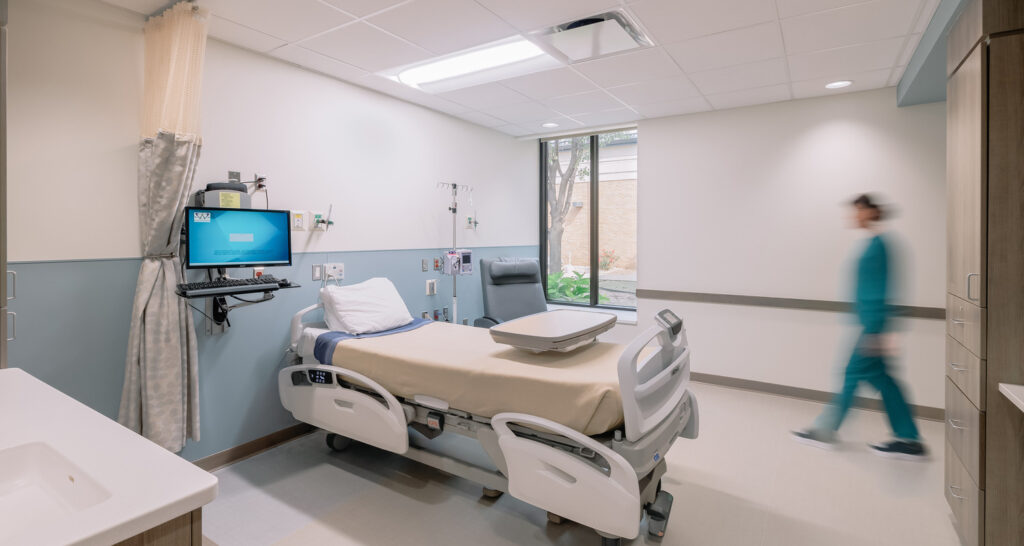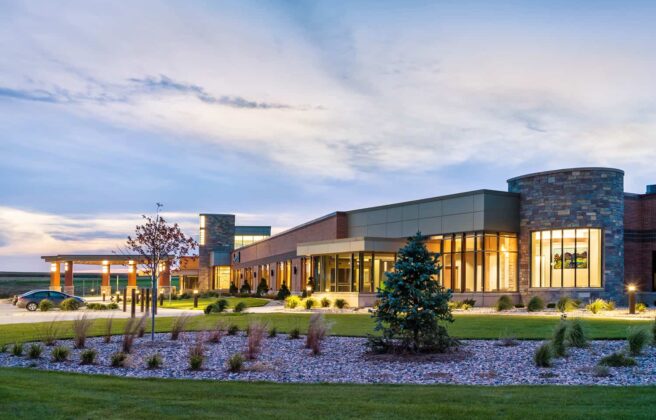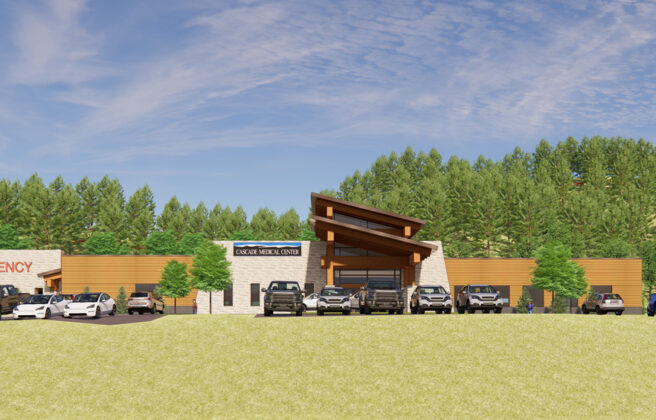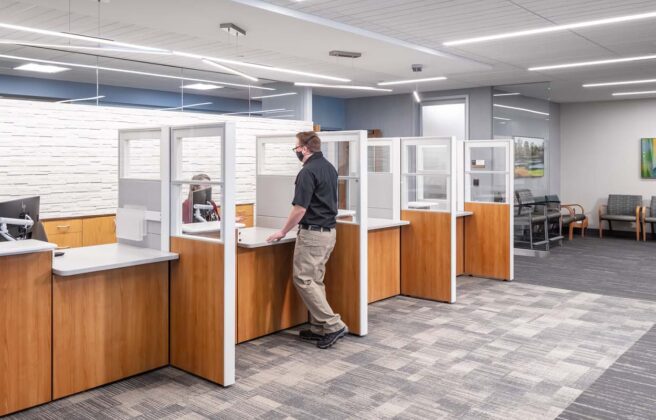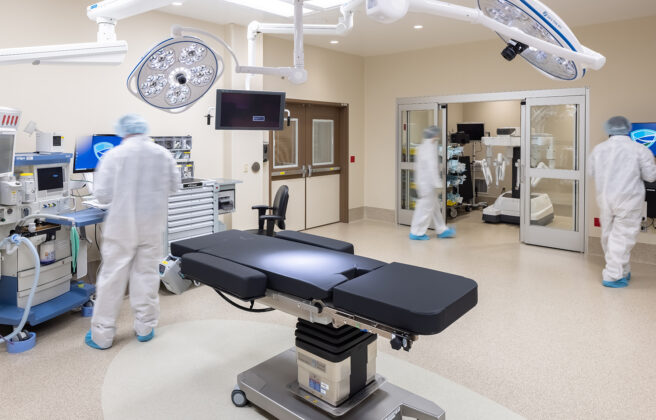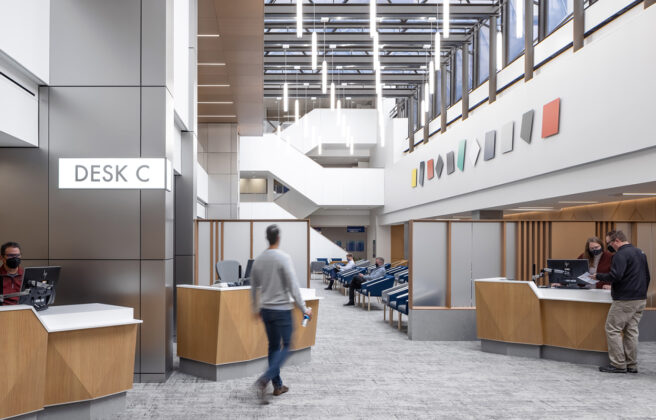Critical Access Hospitals (CAHs) face a unique set of challenges and constraints. With this in mind, it is imperative that they are able to create maximum value and impact from every single project, even those that seem small. In BWBR’s work with these facility types, we see how vital the role of the CAH is within their communities, both to the patients they provide critical medical services for and to the many staff that they employ, and our mission is to help CAH clients meet those needs.
The BWBR Omaha team has worked on numerous CAH projects recently looking for smaller-scale expansions and renovations, rather than completely new facilities. In examining these projects, a powerful theme has emerged — that these “small” projects can actually have an outsize impact. While in many cases it might be easier to build new, that is not always the most realistic or feasible option for our clients. We find a great deal of fulfillment in helping our clients use existing assets and resources to their best and highest purpose. This process often begins with a master facility planning effort, then continues through a phased implementation plan.
Let’s take a look at a few examples:
- For Providence Medical Center in Wayne, Nebraska, our team started with a master plan and is now working on an addition and renovation to provide a new campus main entry, central registration, and a concourse leading to a renovated surgical suite, clinic, and radiology spaces, all while minimizing impact to ongoing operations. Initially, the hospital team thought that their options were limited to solutions like retrofitting an abandoned ambulance garage for their new MRI suite. We listened, learned, and helped Providence to think strategically to solve that immediate need along with addressing multiple other limitations. By improving access and wayfinding, the design team was able to optimize clinical operations for the whole campus, while also creating a welcoming environment for visitors and patients.
- At Antelope Medical Center in Neligh, Nebraska, BWBR was asked to remodel an existing inpatient unit, right-sizing and modernizing the patient rooms and providing accessible spaces for patients, family, and staff. The support core of the inpatient unit was also fully remodeled to create a more efficient workflow. The renovated core space includes a new teaming station, medication room, nourishment area, clean supply rooms, soiled holding rooms, and a sub-teaming station. The 1960s-era patient rooms have been brought up to current best-practice standards to provide state-of-the-art care that prioritizes comfort and safety all while working within the confines of the existing facility.
- The design team worked with Crete Area Medical Center in Crete, Nebraska, on a master plan exploring multiple options for expanded clinical capacity. A multi-phased renovation of the existing family practice clinic and outpatient/specialty clinic only required a minor expansion to the building, while greatly enhancing outpatient capacity and throughput. The renovation also improved the current labor and delivery department by adding LDR and postpartum rooms. The project additionally included the renovation of an underutilized inpatient unit, transforming the space into a surgical services department with one operating room, one procedure room, and three recovery rooms. By strategically evaluating space needs, only a minor expansion was required to make a huge impact to the overall campus.
- Mahaska Health in Oskaloosa, Iowa, started with a campus that had been built up by numerous additions over time. Each of these additions added a new patient entry location which had created a site that was no longer intuitive for patients to navigate. In fact, the back of house functions of the campus had become front and center upon arrival, while the primary entry was located on the back of the campus. The goal of the master facility plan was to flip the campus orientation, simplify the entry points and access, and create a simple way to navigate the building internally. The team was able to modify the circulation scheme from one single primary patient/service/staff corridor to a divided system of on-stage and off-stage circulation. The new design will enhance the brand and culture of Mahaska Health while also providing a modernized and expanded surgical platform and larger, right-sized ED and imaging departments, which will eliminate the need for mobile imaging — a huge plus.
- Clarke County Hospital in Osceola, Iowa, initially engaged BWBR to update their facility as part of their federal government funding for COVID-19. This led to additional renovations throughout the hospital, including the cafe and kitchen, materials management, and pre- and post-surgery spaces. By improving both the infrastructure and the aesthetics of this aging facility, the team was able to maximize positive impact to the campus with minimal resources, empowering Clarke County Hospital to provide the very best care to their patients and community.
The common thread between all of these projects (and many others!) is BWBR’s desire to partner with our clients to make big impact with modest resources. Our team understands the nuance and uniqueness of Critical Access Hospitals, which allows us to optimize operational efficiencies and create the most value possible for our clients. We love breathing new life into these campuses and facilities, enabling them to provide continued positive impact for the communities and patients they serve.


